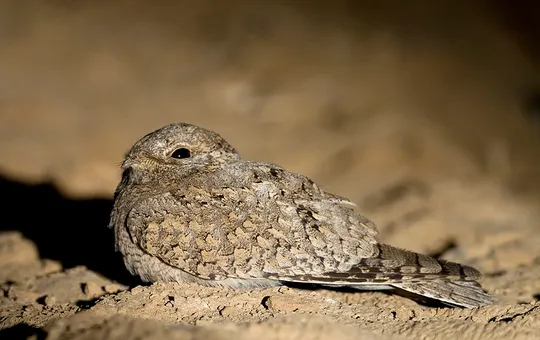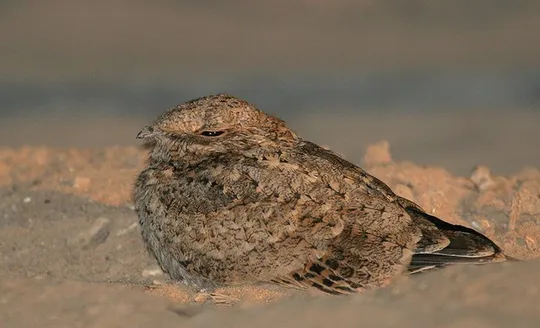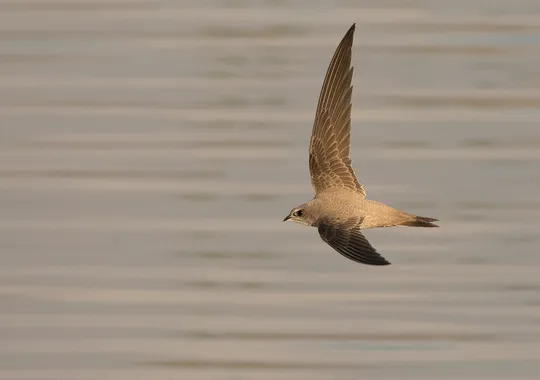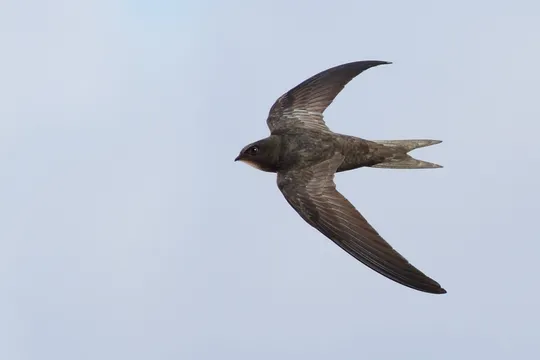Caprimulgus europaeus
 Data Deficient
Data Deficient
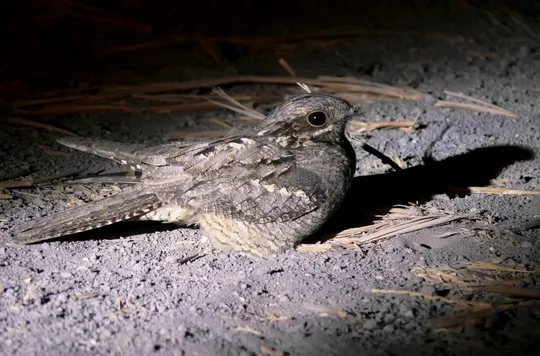
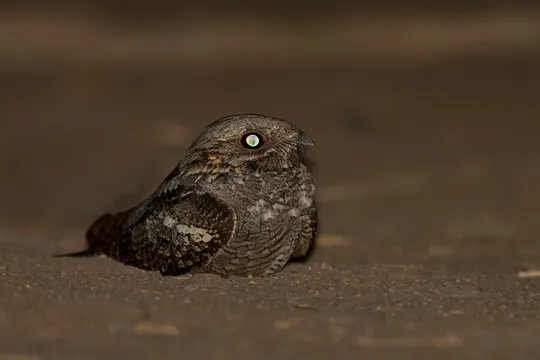
| Presence In Israel | Migrant, Summer |
|---|---|
| Breeding In Israel | Breeder |
| Migration Types | Long Range |
| Zoographical Zones | Mediterranean, Irano-Turanian |
| Landscape Types | Plains & Valleys, Wetlands, Riparian, Wetland Thickets |
| Vegetation Types | Marsh and Riparian |
| Vegetation Densities | Medium |
| Nest Locations | Ground |
| Diet Types | Invertebrate |
| Foraging Grounds | Aerial |
| Body Sizes | Small (up to 500g) |
| Threat Factors | Unknown |
The European Nightjar is a small nocturnal bird that specializes in hunting moths in flight. Its body is delicate and elongated, with a long narrow tail and wings. Head is large and rounded, with a short bill and a large gaping mouth. At the margins of the bill are tough bristles that broaden its “funnel trap”. Its feathers are soft, grey and streaked, providing excellent camouflage against a background of leaves or tree bark. Flight is silent, light and agile, with light jumps, flutters, rapid changes of direction and short glides. Wings are curved, bent at the carpal joint. The adult male has prominent white patches on its wings and tail.
The European Nightjar is a relatively common passage migrant throughout most of Israel, and can be seen migrating in all climates, including active flight over the sea. It was only recently discovered to breed in Israel and its currently known breeding range is along the Yarmukh and southern Jordan rivers, from Hamat Gader in the north to Shadmot Mehola in the south (Haviv 2017).
The European Nightjar has suffered pesticide poisoning in Europe. Its threats in Israel are unknown.
- חביב, א. 2017. סיכום פעילות ניטור קינון תחמס אירופי יולי 2017. דו"ח מרכז הצפרות של החברה להגנת הטבע.
- פז, ע. 1986. עופות. מתוך אלון, ע. (עורך), החי והצומח של ארץ ישראל. כרך 6. הוצאת משרד הביטחון, ישראל.
- Shirihai, H., 1996. The Birds of Israel. Academic Press, London.
- Symes, A. 2013. Species generation lengths. Unpublished, BirdLife International.
- Species page at Birdlife International
Distribution maps
The maps presented here provide visual information on the distribution of species in Israel from the past and present, and the changes in occupancy and breeding density during the comparison period. For further reading
Relative Abundance 2010-2020
Breeding density values in the current decade as determined from experts' opinion and observations from databases.
| Data Missing | Sporadic | Limited Sites | Low Density | High Density |
|---|---|---|---|---|
| 8 | 12 | 12 | 21 | 19 |
Relative Abundance 1980-1990
Density values based primarily on the book The Birds of Israel (Shirihai 1996).
| Data Missing | Sporadic | Limited Sites | Low Density | High Density |
|---|---|---|---|---|
| 5 | 14 | 14 | 17 | 22 |
Occupancy 1990-2020
The map shows differences in the species breeding distribution between the 1980's breeding map and the current weighted breeding evaluation. Negative value - species previously bred in the grid and is not presently breeding; positive value - species has not previously bred in the grid and is currently breeding.
| Data Missing | No Change | Occupancy Increase | Occupancy Decrease |
|---|---|---|---|
| 6 | 35 | 1 | 9 |
Change in Relative Abundance 1990-2020
The map shows the changes in the relative abundance of a species in each of the distribution grids between the breeding map of the 1980s and the weighted current breeding evaluation. Negative values - decline in abundance; positive values - increase in abundance; zero - no change in abundance.
| 80 to 100 | 50 | 20 to 30 | No Change | 30- to 20- | 50- | 100- to 80- | Data Missing |
|---|---|---|---|---|---|---|---|
| 0 | 4 | 2 | 22 | 12 | 14 | 11 | 16 |
| Rarity | |
|---|---|
| Vulnerability | |
| Attractiveness | |
| Endemism | |
| Red number | |
| Peripherality | |
| IUCN category | |
| Threat Definition according to the red book |
